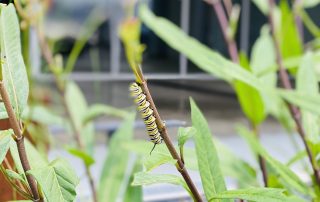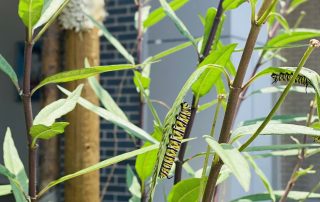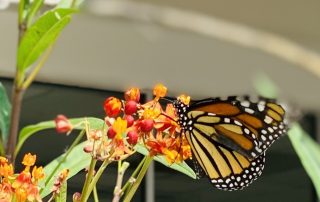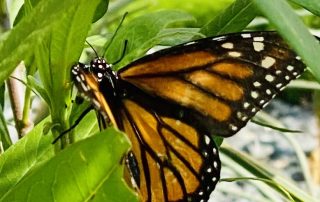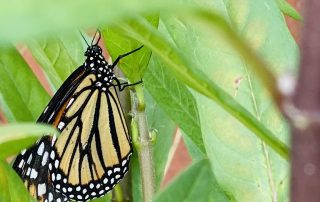Monarch Butterfly
Known for its beautiful orange-red wings, white spots, black veins and borders, Monarch Butterfly is a symbol of transformation and spiritual rebirth for many cultures and religions.
Monarch as a species has been under threat due to climate change, pesticide, loss of milkweed plants and loss of winter habitats. Its population is reported to be at the lowest level. Monarch caterpillars only eat milkweed plants; and Monarch butterflies need milkweed to lay their eggs. D-Square is fortunate that our milkweed plants have survived the Houston Freeze and continue to offer a safe metamorphosis shelter to these monarch caterpillars.
Interesting Facts:
- Calls Danaus Plexippus (Greek). The name means “sleepy transformation”, referring to its ability to hibernate and metamorphize.
- Lives in North, Central, and South Americas; Australia; India and Western Europe.
- Has beautiful bright orange wings covered with a black vein/borders and white dots. Females have thicker veins in their wings.
- Obtains its poison from the milkweed plants. Its bright color indicate it’s toxic to its predators.
- Has the most evolved migratory pattern. The flutter of monarch butterflies would travel 1,200-2,800 miles from North America to Mexico where they would hibernate in mountain forests. Scientists believe monarch use the sun and the changing weather to determine the timing of their migration flight.
- Remains an important part of our ecosystem; helps many flowers pollinate.
